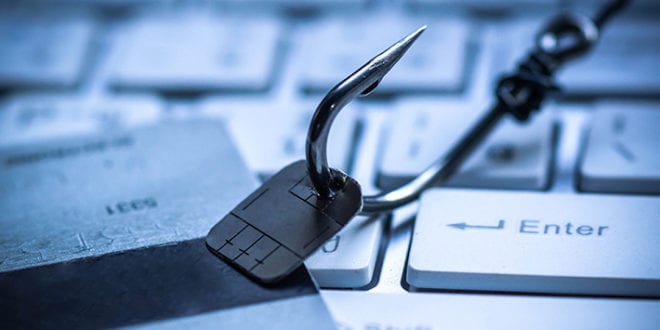One big data security breach is enough to cause significant financial and reputational losses for a company. And to initiate a data breach, only one click is enough. Phishing is a method of using emails to steal important information and spread malware.
The best way to avoid damage related to phishing attacks is by having your files backed up. Backups like Spin ensure that the Gmail and Google Drive data is recoverable in case of a phishing attack. Now, let’s find out more about phishing and ways to protect against it.
Phishing Types
There are several common phishing techniques. Ultimately, all of them serve to perform a cyber-attack, yet the execution is different. Some of the most popular types of phishing are:
- Bulk Phishing
- CEO Fraud
- Spear Phishing
- Whaling
Now let’s take a look at each of these types.

Bulk Phishing
Bulk phishing is a technique of sending as many phishing emails as it is possible and covering the widest audience. In bulk phishing, emails are not designed to target a specific user. Bulk phishing utilizes the quantity-over-quality approach.
Of course, each email separately has a low chance of initiating an attack, yet bulk phishing often succeeds due to the enormous numbers of emails sent. Bulk phishing emails are the easiest to detect, and Gmail filters often place them in the spam folder.
CEO Fraud
Another type of phishing attack is CEO fraud or impersonation of high-ranking executives of a targeted company. An attacker uses the identity of a CEO or other C-level in communicating with a lower-level employee. Unsuspecting users may be tricked and perform actions demanded by hackers. For example, click a link and download malicious software, which will infect the whole system. CEO fraud may lead to various negative consequences. Disclosure of confidential information, data loss, or ransomware attack, to name a few.
The CEO fraud phishing emails usually contain the correct name of a C-level executive. However, the domain name is slightly different. For example, instead of the legit address name@company.com, a malicious email may look like name@company.io and so on.

Spear Phishing
Spear phishing is the technique of creating a personalized email for a specific targeted user or company. Such emails look like an ordinary email for a target. The hacker may have already obtained some information about the end-user or the company to create a seemingly legit email. That’s why spear phishing is extremely effective: 91% of cyberattacks and the resulting data breach begin with a spear-phishing email.
Usually, spear-phishing emails include the target’s name, phone number, and other personal information. Such email may pretend to be an email from a business partner or customer sharing some important information or giving a link to an event.
Such emails use various social engineering to look as natural as possible. However, they are still just another way for a scammer to get a hold of someone’s data, and ultimately, money.
Whaling
Whaling is a special phishing attack that is designed to target C-level employees, business owners, or other people with high-value data. All information within such an email is tailored to an executive. Whaling may include legal or financial related requests, customer complaints, and other business-critical issues.
An unsuspecting target may be lured into disclosing sensitive information or into clicking a link with malicious code to initiate a cyber-attack. The reasons behind whaling is simple. High-profile accounts have access to the most system-critical data, including financial and billing information. If attackers can steal the accesses tied to high-level executives, the potential damage to a company is extremely high.
How to Protect G Suite from Phishing?

Understanding how phishing works allows you to prevent it from damaging your Google business suite. There are some basic anti-phishing tips that will help to avoid phishing attacks and the damage they deal with.
Conduct Security Awareness Training
First of all, all G Suite users should understand about the phishing threat. Everyone should be aware that an email may be malicious and it is worth double-checking everything before replying, clicking any link, or downloading an attachment.
Check the Email Address
One of the most obvious red flags is an email address. The phishing email comes from is a different email domain than the business it claims to represent. If you see some misspellings in the domain or company name, it’s likely an attack.
Check the Email Content
Scammers often ask you for sensitive information. An email that is requesting information that would never be requested in an email from a reputable organization such as credit card numbers or social security numbers.
Another thing you should pay attention to is the language. Scammers often write phishing emails poorly, with misspellings, grammatical and punctuation errors. Reputable organizations rarely allow it.

Verify the Website
To avoid being impacted by a phishing attack, it is vital to avoid clicking suspicious links. That’s why you always need to verify if the link leads to a reputable website. First of all, a safe website always starts with https. Secondly, the website name should reflect the name of the organization correctly, without misspellings. Thirdly,
Have Your G Suite Data Backed Up
Despite all precautions, a phishing attack may happen and result in, for example, a ransomware attack. Using backup software is the best way to retrieve damaged files and avoid data loss. You can choose the best backup solutions for G Suite and Office 365 at spinbackup.com to keep your data backed up at protected automatically.
Having a backup helps to protect Gmail and Google Drive items that can be lost during a phishing attack.
Do Not Share Personal Information
A reputable organization will not ask your card number, CVC/CVV code, login credentials to your Google account, or anything that may compromise your identity and security. Generally, you shouldn’t share sensitive information as hackers can and will use it against you.
According to The National Cyber Security Centre, a multi-layered approach is important to defend against phishing attacks. Which means that it is better to implement multiple anti-phishing measures, rather than relying on a single one. Stay safe and don’t let scammers steal your data using phishing!
 Imagup General Magazine 2024
Imagup General Magazine 2024



